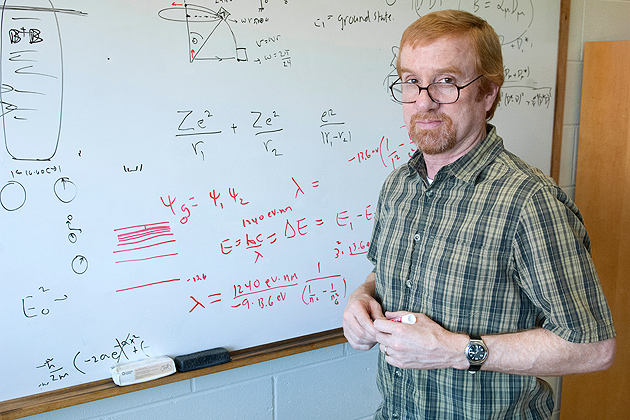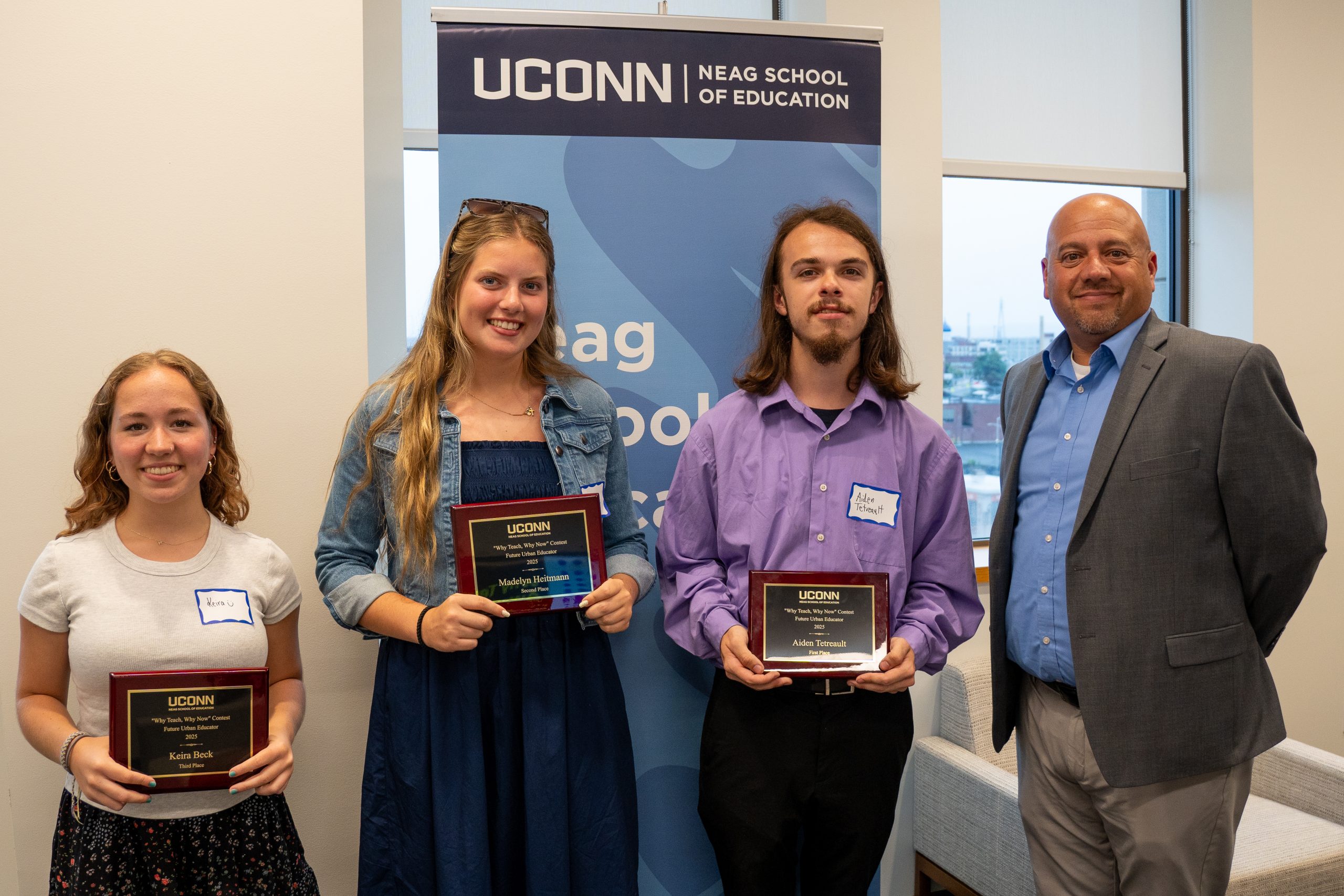
An international collaboration of scientists, including Thomas Blum, associate professor of physics, is reporting in landmark detail the decay process of a subatomic particle called a kaon – information that may help answer fundamental questions about how the universe began.
The research, reported online in the March 30, 2012 Physical Review Letters, used breakthrough techniques on some of the world’s fastest supercomputers to expand on a 1964 Nobel Prize-winning experiment. A new generation of IBM supercomputers now being installed will allow scientists to calculate the decay in even more detail.
Examining the decay of the kaon offers insights into fundamental problems in physics.
“This calculation brings us closer to answering fundamental questions about how matter formed in the early universe and why we, and everything else we observe today, are made of matter and not anti-matter,” says Blum, a co-author of the paper.
Anti-matter is described in this analogy from CERN, the European Organization for Nuclear Research: Imagine stamping a coin from a hot metal sheet. You are left with a coin and a hole – the hole could be called an “anti-coin.” Similarly, when energy transforms into matter, a particle of matter and an anti-particle are produced.
When the universe began, did it start out with more particles of matter than anti-matter? That is the way the question was framed by another co-author, Taku Izubuchi of the RIKEN BNL Research Center and Brookhaven National Laboratory on Long Island, NY. Or, he asked, were the two symmetrical and was there another mechanism that resulted in more matter than anti-matter?
The asymmetry of matter and anti-matter is one of the unsolved problems of physics. The universe today is composed almost exclusively of matter with virtually no anti-matter to be found.
The current paper explains in more detail the subatomic particle decay that was first reported in a 1964 Nobel Prize-winning experiment at Brookhaven. That experiment showed the first evidence of a lack of symmetry between particles and their anti-particles, or matter and anti-matter.
Since then, theoreticians have studied subatomic particle decay, but without the completeness or precision of the current result.
The decay described in the paper took place in a kaon, a particle far smaller than an atom. The scientists followed the decay process as the kaon split into two pions, even smaller particles. The length of the decay process spanned nearly 18 orders of magnitude, a range they compared to the difference between the size of a single bacterium and the size of our entire solar system.
Their calculation is a major step forward, according to co-author Izubuchi, in a new kind of stringent test of the Standard Theory of physics, the most fundamental theory describing particles of matter and how they interact.
The next step in the research will be to determine the remaining unknown quantity that is

important to understanding the difference between matter and anti-matter in kaon decay. This last quantity will either confirm the present theory or perhaps, if they are lucky, Blum says, point to a new understanding of physics.
The study’s co-authors, besides Blum, were physicists from Brookhaven, the RIKEN BNL Research Center, Columbia University, the Max-Planck Institute in Germany, the University of Southampton and the University of Edinburgh in the UK, and Washington University.
The calculation in the study required 54 million processor hours on the IBM BlueGene/P supercomputer at Argonne National Laboratory near Chicago – the equivalent of 281 days of computing with 8,000 processors. Additionally, parts of the calculation were done on the QCDOC supercomputer at Brookhaven, the USQCD’s Ds computer cluster at Fermi National Laboratory in Illinois, the Iridis Cluster at the University of Southampton and at the DIRAC facility in the UK.
According to co-author Peter Boyle of the University of Edinburgh, a new generation of computers, the IBM BlueGene/Q machines now being installed in laboratories around the world, will have 10 to 20 times the performance of current machines and will allow the physicists to get an even more detailed and accurate version of kaon decay.
The research was supported by the U.S. Department of Energy’s Office of Science, the UK’s Science and Technology Facilities Council, the University of Southampton, and the RIKEN Laboratory in Japan.
Blum’s research is supported by the U.S. DOE Office of Science. He has been on the physics faculty in CLAS at UConn since 2004. Before that, he was a RIKEN fellow at the RIKEN BNL Research Center, a postdoctoral fellow at Brookhaven and a senior engineer at the Boeing Company.
He studies Quantum Chromodynamics (QCD), the fundamental theory of the strong force. The strong force in physics is what binds quarks and gluons, subatomic particles, together to form protons and neutrons, the building blocks of matter. They are also the constituents of kaons and pions.
For more on antimatter
http://livefromcern.web.cern.ch/livefromcern/antimatter/index.html



